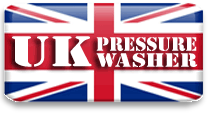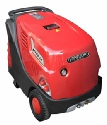







LOW PRESSURE WASHERS



STATIC CABINET WASHERS










COLD WATER WASHERS



HOT WATER / STEAM WASHERS






PETROL / DIESEL WASHERS


PIPEWORK INSTALLATIONS


DRY STEAM GENERATORS

COMMERCIAL EQUIPMENT



FLOORCARE


OTHER PRODUCTS


VACUUM CLEANERS


CHEMICALS & CONSUMABLES
ESSENTIALS
Email us: info@uk-

Member of the National Association of Vehicle Valeting

KNOWLEDGE BASE


USED EQUIPMENT





FINANCING YOUR PURCHASE



Free Equipment Deals
Finance Tax Advantages



EQUIPMENT SERVICING




CLEANING KITS



Dustbin Cleaning Kit
**Special Feature

Voted BEST COMMERCIAL PRESSURE WASHER SITE by www.traffic-

01773 4321 28
:: Lavor
:: Edge
:: Cleanwell
:: Mazzoni
:: Demon
At UK Pressure Washer Network we are able to offer FREE and impartial advice on all your commercial cleaning requirements on all leading brands including;
:: Karcher
:: Kranzle
:: Alto
:: Kew
and all other leading manufacturers









Click HERE for a UK Pressure Washer Price List


UK Pressure Washer Network… Local Service - Nationwide

Get A
No Obligation
Quote

www.uk-


START YOUR OWN PRESSURE
WASHER BUSINESS HERE
:: Fabric Dry Cleaning
Dry cleaning (or dry-
History
Dry cleaning uses non-
Early dry cleaners used petroleum-
After World War I, dry cleaners began using chlorinated solvents. These solvents were much less flammable than petroleum solvents and had improved cleaning power. By the mid-
Traditionally, the actual cleaning process was carried-
This changed when the British dry-
During the 1970s and 1980s, Spencer machines were extremely popular, with virtually every branch of Bollom possessing either a Spencer Minor or a Spencer Junior. Spencer continued to produce machines (introducing new modular and computer controlled models, such as the Spencer Sprint series) until the late 1980s, when the company closed. Spencer machines may still occasionally be seen.
Process
A dry-
During the wash cycle, the chamber is filled approximately one-
This is known as the cycle and is continued for the wash duration. The solvent is then removed and sent to a distillation unit comprising a boiler and condenser. The condensed solvent is fed into a separator unit where any remaining water is separated from the solvent and then fed into the 'clean solvent' tank. The ideal flow rate is one gallon of solvent per pound of garments (roughly 8 litres of solvent per kilogram of garments) per minute, depending on the size of the machine.
Garments are also checked for foreign objects. Items such as plastic pens will dissolve in the solvent bath and may damage textiles beyond recovery. Some textile dyes are "loose" (red being the main culprit), and will shed dye during solvent immersion. These will not be included in a load along with lighter-
Many people believe that marks or stains can be removed by dry cleaning. Not every stain can be cleaned just by dry cleaning. Some need to be treated with spotting solvents; sometimes by steam jet or by soaking in special stain remover liquids before garments are washed or dry cleaned. Also, garments stored in soiled condition for a long time (two months or more) are difficult to bring back to their original color and texture. Natural fibers such as wool, cotton, and silk of lighter colors should not be left in dirty or soiled condition for long amounts of time as they absorb dirt in their texture and are unlikely to be restored to their original color and finish.
A typical wash cycle lasts for 8–15 minutes depending on the type of garments and degree of soiling. During the first three minutes, solvent-
At the end of the wash cycle, the machine starts a rinse cycle wherein the garment load is rinsed with fresh distilled solvent from the pure solvent tank. This pure solvent rinse prevents discoloration caused by soil particles being absorbed back onto the garment surface from the "dirty" working solvent.
After the rinse cycle, the machine begins the extraction process, which recovers dry-
During the drying cycle, the garments are tumbled in a stream of warm air (63°C/145°F) that circulates through the basket, evaporating any traces of solvent left after the spin cycle. The air temperature is controlled to prevent heat damage to the garments. The exhausted warm air from the machine then passes through a chiller unit where solvent vapors are condensed and returned to the distilled solvent tank. Modern dry cleaning machines use a closed-
After the drying cycle is complete, a deodorizing (aeration) cycle cools the garments and removes the last traces of solvent, by circulating cool outside air over the garments and then through a vapor recovery filter made from activated carbon and polymer resins. After the aeration cycle, the garments are clean and ready for pressing/finishing.
Solvent Processing
Working solvent from the washing chamber passes through several filtration steps before it is returned to the washing chamber. The first step is a button trap, which prevents small objects such as lint, fasteners, buttons, and coins from entering the solvent pump.
Over time, a thin layer of filter cake (called muck) accumulates on the lint filter. The muck is removed regularly (commonly once per day) and then processed to recover solvent trapped in the muck. Many machines use "spin disc filters," which remove the muck from the filter by centripetal force while it is back washed with solvent.
After the lint filter, the solvent passes through an absorptive cartridge filter. This filter is made from activated clays and charcoal and removes fine insoluble soil and non-
To enhance cleaning power, small amounts of detergent (0.5%-
Since the solvent recovery is less than 100%, and because dry-
[edit] Symbols
The international GINETEX laundry symbol for dry cleaning is a circle. It may have a letter P inside to indicate perchloroethylene solvent, or a letter F inside to indicate a hydrocarbon solvent. A bar underneath the circle indicates that only mild cleaning processes should be used. A crossed-
Dry-
Cooked muck
Cooked Powder Residue — the waste material generated by cooking down or distilling muck. Cooked powder residue is a hazardous waste and will contain solvent, powdered filter material (diatomite), carbon, non-
Sludge
The waste sludge or solid residue from the still contains solvent, water, soils, carbon, and other non-
Environment
Perc is classified as a hazardous air contaminant by the United States Environmental Protection Agency and must be handled as a hazardous waste. To prevent it from getting into drinking water, dry cleaners that use perc must take special precautions against site contamination. Landlords are becoming increasingly reluctant to allow dry cleaners to operate in their buildings. When released into the air, perc can contribute to smog when it reacts with other volatile organic carbon substances.[2] California declared perchloroethylene a toxic chemical in 1991, and its use will become illegal in that state in 2023.[3]
Solvents Used in Dry Cleaning
* Glycol ethers (dipropylene glycol tertiary-
* Hydrocarbon — This is most like standard dry cleaning, but the processes use hydrocarbon solvents such as Exxon-
* Liquid silicone (decamethylcyclopentasiloxane or D5) — gentler on garments than Perc and does not cause color loss. Requires a license be obtained to utilize the property of GreenEarth Cleaning. Though considerably more environmentally friendly, the price of it is more than double that of perc, and GreenEarth charges an annual affiliation fee.[6] Degrades within days in the environment to silica and trace amounts of water and CO2. Produces nontoxic, nonhazardous waste. Toxicity tests by Dow Corning shows the solvent to increase the incidence of tumors in female rats (no effects were seen in male rats), but further research concluded that the effects observed in rats are not relevant to humans because the biological pathway that results in tumor formation is unique to rats.[7](170.6 °F/77 °C flash point).
* Modified hydrocarbon blends (Pure Dry)
* Perchloroethylene — In use since the 1940s, perc is the most common solvent, the "standard" for cleaning performance, and most aggressive cleaner. It can cause color bleeding/loss, especially at higher temperatures, and may destroy special trims, buttons, and beads on some garments. Better for oil-
* Liquid CO2 — Consumer Reports rated this method superior to conventional methods, but the Drycleaning and Laundry Institute commented on its "fairly low cleaning ability" in a 2007 report.[8] Another industry certification group, America's Best Cleaners, counts CO2 cleaners among its members. Machinery is expensive—up to $90,000 more than a perc machine, making affordability difficult for small businesses. Some cleaners with these machines keep traditional machines on-
* Wet cleaning — A system that uses water and biodegradable soap. Computer-
Go to Spray Extraction Units page
HOME | SERVICES | SPARE PARTS & ACCESSORIES | CONTACTS
PRESSURE WASHERS: Domestic Jet Washers | Cold Water Electric | Cold Diesel / Petrol Driven | Wall Mounted / Fixed Cold | Hot Water 240v | Hot Water / Steam 240v | Hot Water / Steam 415v | Petrol / Diesel Driven | Electrically Heated | Hot / Steam Petrol Diesel Driven | Trailer-
FLOOR CARE: Floor Polishers | Scrubber Driers | Sweepers | Wet & Dry Vacuums | Spray Extraction Units | Cleaning Kits |
CHEMICALS: Chemicals |
CLEANING KITS: Cleaning Kits Index | Truck & Bus Washing Kit | Car & Van Washing Kit | Dustbin Cleaning Kit | Exterior Valeting Kit |Interior Valeting Kit | Path & Patio Kit | Bespoke Cleaning Kits |
USED EQUIPMENT: Used Equipment For Sale | Cleaning Equipment Wanted
FINANCE: Finance Options | FlexiPay Leasing | Contract Hire | Interest Free Credit | Free Equipment Deals | Finance Tax Advantages
EQUIPMENT SERVICING: Service & Maintenance | GoldStar Maintenance | Book An Engineer | Postal Repair System
KNOWLEDGE BASE: Safe Pressure Washer Use | Washer Maintenance Tips | Winter Maintenance Tips | Nozzle Size Glossary | Traffic Film Remover Explained | Pressure Washers Explained |
Abrasive Blasting | Soda Blasting Explained | Dry Ice Blasting Explained | Nozzle Size Glossary |
Carpet & Upholstery Cleaning | Carpet Cleaning | Fabric Wet Cleaning | Fabric Dry Cleaning | Fabric Restoration


Fabric Dry Cleaning Explained...




Get A
No Obligation
Quote
